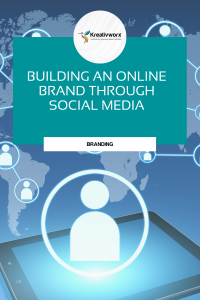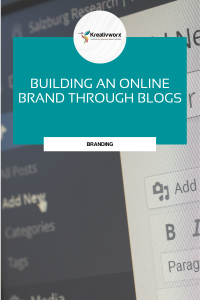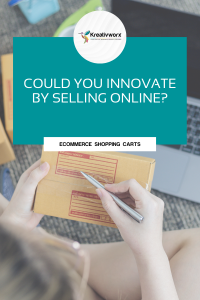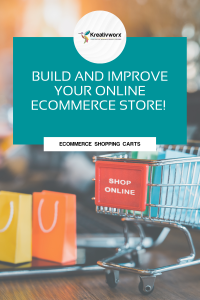
What is Social Media storytelling and what benefits could it hold for your brand?
What is Social Media storytelling and what benefits would it hold for your brand? During the first few years when the use of social media for promotional purposes first picked up, most companies believed it to be just another advertising platform. As a result, virtually all brand and company posts were blatantly promotional. Over the past few years consumers have woken up to what seemed like blatant misuse of online many ‘social’ platforms for marketing and sales purposes. The same plain copycat content is no longer effective, as viewers and readers catch on virtually immediately that there is no value, personality, or giving spirit behind these online profiles. Now, it’s no longer about crowding their feeds with ‘clever’ sales posts and more about building relationships, telling authentic stories and drawing emotional responses from your followers. How to develop a modern marketing strategy using brand storytelling When you consider how the most effective (modern) ads are produced, you should keep in mind that they aren’t impactful purely because of the words used. A really effective and impactful story teaches us something about the world and about ourselves. The same is true for advertising. Recently we’ve noticed innovative uses of storytelling incorporated into branding and promotional campaigns more often. People are more eager to connect with a brand that has a mission they can relate to, or a story they that makes them seem more authentic, than a brand that is only out to make another customer. Here are a few suggestions from Kreativworx, on how you can use storytelling in your brand’s Social Media strategy: Develop a (Long) Story Arc Any story is made up of a sequence of events with some key elements to add interest, intrigue, or excitement, keeping the reader engaged. With social media, there are countless methods and formats through which to tell stories that allow you to cross the boundaries still limiting traditional storytelling and advertising. When you develop new content for Social Media it is important to start with a focus on your goal or purpose and work backwards from there. Consider your company or brand’s goals over the next 1 to 5 years. Think about the ideal customer/client that you are trying to reach through this content, what actions would you like them to take and what does the entire cycle look like to get them there. Every single digital asset that you post and share needs to tell its own story. Ideally, you want to take your audience and customers on a journey that continues even after they’ve consumed your content. Every piece of content – every post, graphic, micro-blog, and every video affects and ads to the story of your brand and business. Therefore, you have a chance to create a long-term connection with your community. You have the opportunity to build trust and loyalty that could last for years or even decades to come. We recommend you consider how the collective story you are sharing through all these different pieces of content can form a “story arc” – a beginning, middle, and an end. This should form the foundation of your content strategy while keeping a firm focus on your long-term goals, potential, and unique positioning. Show Don’t Tell When telling any type of story, no matter the format or platform, it is more important to show than to tell. When you are telling a story through Social Media, this may involve creating a video, info-graphic, or even an eye-catching photograph. When content is skilfully crafted in any these formats, they can convey your message in a matter of seconds. Consider the memory, emotion, or physical sensation that different types of photographs, sounds, or visuals, could trigger for your audience. How can you best share your message, with as little words as possible, while connecting your brand with the specific beliefs and values you want it to trigger in the mind of your ideal customer? Write Like a Writer To grab your followers or fans attention almost immediately, you should utilize creativity, boldness, a concise writing style, while peeking their interest without giving too much away too soon. Depending on the type of person you are targeting, this could involve typical narrative elements. You may have a hero (the protagonist) who goes on a tense journey, then you throw in a few unexpected twists, going on to share how he saved the day or changed his life, ending with an emotional but reassuring peek that leaves them wanting more. Inviting your audience into the engaging and inspiring world of your brand, as if it were a person such as themselves, using the same tools that fiction writers do, you have the opportunity to engage and hook them from the first sentence until the last. Make it Meaningful In order to reach the right people and have them connect with your message in a powerful way, one key element is to find out what will make your product or service meaningful to them. What will align with their professional or personal values, not just in this moment, but for years to come? Once you’ve found those facets of your offerings or business positioning that will be meaningful in the minds of your audience, you can develop your brand story (and countless story snippets) based on that. Another facet of developing your brand story, is finding a way to illustrate how you can fulfil your ideal customer’s/client’s basic human needs, while drawing an emotional reaction from them. Use tools that allow more authenticity Many social tools such as Instagram Stories and Snapchat Stories allow you to draw out an emotional reaction, convey the authenticity of your brand, and connect with your followers and fans in a matter of seconds. This type of short-lived social media publishing methods is extremely popular at present, particularly among millennials and Generation Z, mostly because it allows brands and public personalities to convey more authenticity and transparency through sharing more about their personal lives or behind-the-scenes stories.










